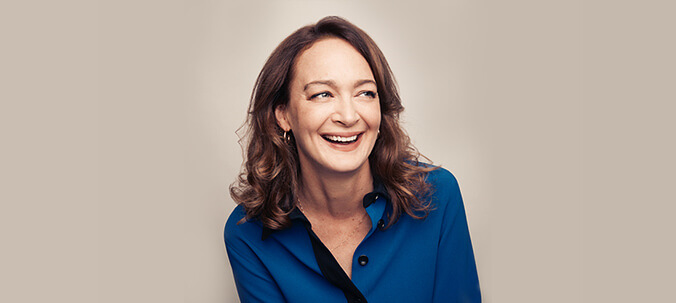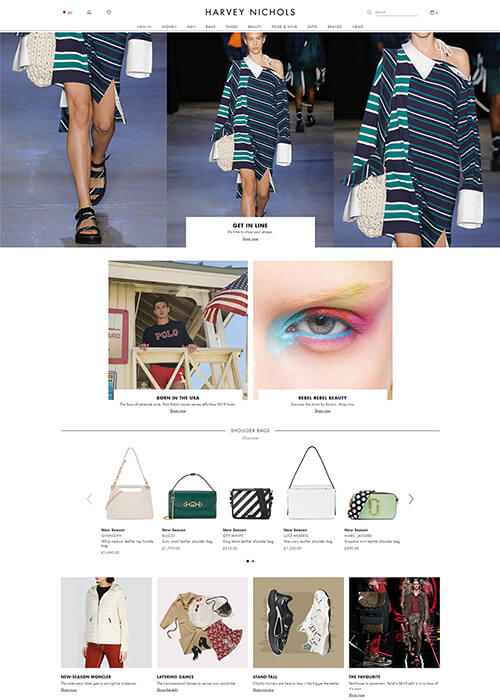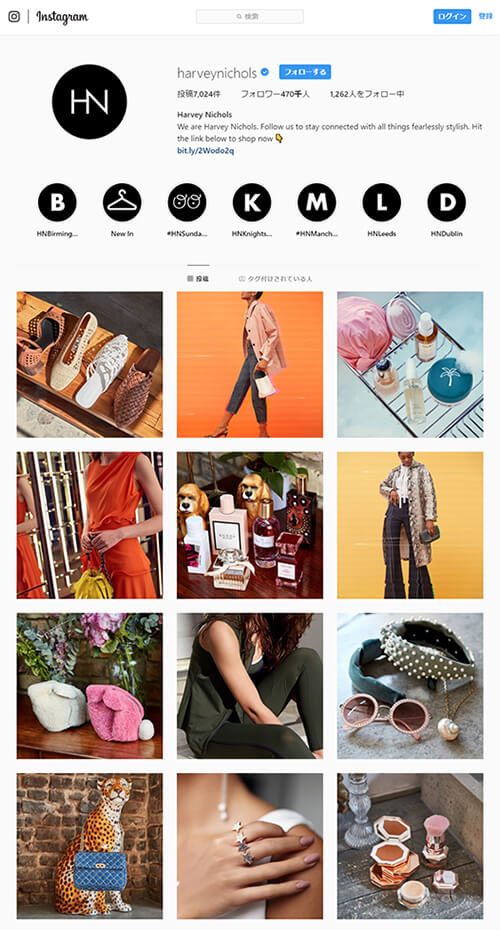Laura Larbalestier
AmazonFWT 2019 A/W Overseas guest interview, vol.2
Harvey Nichols Group Fashion Buying Director
[ Website ] https://www.harveynichols.com/
[ Instagram ] https://www.instagram.com/harveynichols/
[ Twitter ] https://twitter.com/harveynichols
[ Facebook ] https://www.facebook.com/harveynichols/
Established in 1831, Harvey Nichols is a long-established British department store with several overseas subsidiary stores including Hong Kong and Dubai. Having a high reputation for their fashion category, their list of loyal customers includes celebrities from around the globe. For this season, the Fashion Buying Director of Harvey Nichols, Ms. Laura Larbalestier, visited Japan by invitation from JETRO, to observe Amazon Fashion Week TOKYO, visit ateliers of Japanese brands and talk business.
We spoke to Ms. Larbalestier, whom continues to offer the latest fashion to a global range of customers, on Harvey Nichols, Japanese brands, and fashion week.
We’ve heard this is your first visit to Japan. Having seen the town of Tokyo and people’s fashion for the first time, what is your impression?
I’ve always had the image that Japan, especially Tokyo, is a place which gives inspiration to creation, and it has always been a place I wanted to visit, so I am very thankful for the invitation.
Having come here, the first thing I strongly felt was that the culture is completely different from culture in Europe. Consumption patterns are also different. I think people are very concerned with fashion and maintain an extremely conscientious attitude towards fashion. Rather than following the trend, I feel they prioritize using fashion as a means to express oneself, viewing dressing as a personal act.
Please tell us the shops and/or spots you’ve been to during this visit.
I mainly went to shops around the Daikanyama, Aoyama areas, including SUPER A MARKET, BEAMS, UNITED ARROWS, DESPERADO, Saturdays NYC, OKURA, HOLLYWOOD RANCH MARKET, Daikanyama Tsutaya Book Store, etc. I plan to visit the sacai Aoyama shop and go tour department stores, after this. With regards to beauty products, I most definitely want to go to uka for sure.
I felt all Japanese shops are skillful in display. In all the shops I’ve seen so far, even if they carried the same items or brands, each had its own unique taste or story in their method of presentation, each beautiful in their own way.
Prior to coming to Japan, what kind of information gathering did you do?
I gathered as much information as I can from Instagram and re-comments from friends. From there, I picked-up shops and brands which peeked my interest and did research on those. But as I actually walked down the streets, my interests changed and so have my plans (laugh). I strongly feel that overseas buyers should check the Japanese fashion scene and consumption behavior more.
What did you think of your first Amazon Fashion Week TOKYO experience, in comparison to fashion weeks of other cities?
Tokyo fashion week is an extremely well organized, well managed fashion week, with schedules carried out on-time. And I felt it is characterized by its mix of brands, partly aimed at overseas developments and partly aimed at the domestic market. Each brand’s attitude towards production and particularities towards details were also quite impressive. I was also impressed by fashion week Tokyo’s support structure in helping brands do their presentation. The only thing lacking is a variation in venues. I think it would be better if there were a wider variety in locations where the shows are presented.
Of the shows you’ve seen so far, were there any brands that caught your eye?
I liked HYKE and Children of the discordance. HYKE offers very elegant real clothes. It has a sure individuality that if you see someone wearing it, you immediately recognize it is HYKE. I felt it would be accepted in Europe too, and would be easy to fit into the market. I think it has a sense of existence close to sacai, which has already established its own position in Europe. Children of the discordance was, in one word, powerful, showing a very cool and modern presentation, befitting a Japanese men’s brand. There was a wide variety of guests coming to see the show, which I found very interesting because I felt this variety of guests symbolizes the diversity and mixed sense of the brand.
When contemplating advancement into European markets, what do you think is the strengths and weaknesses of Japanese brands?
I think the strength of Japanese brands is “individuality”. They are imaginative yet wearable real clothes. Their weakness is that they tend to become expensive in Europe, and whether they can comply to the delivery time we ask for. Presently at Harvey Nichols, we don’t carry any Japanese brands, but we are always on the look-out for Japanese brands. I’m feeling potential in BIGOTRE and DAIRIKU, which I saw at a showroom during this visit.
Harvey Nichols has stores around the world. Could you please tell us of your buying system and present situation of each store?
The buying of Harvey Nichols is done by a team of 46 people, handling a total of 700 – 800 brands, in women’s, men’s and accessories. Starting with London, we have many stores around the world, including Hong Kong and Dubai, with a wide range of customers. In our London store alone, we have both domestic customers and tourists from around the world. As for our on-line shop, 60% are domestic customers within the UK, and 40% from other areas. Aimed at such a wide range of customers, our buyers do the buying based on seasonal data and buyer’s inspiration, after which, the selected products are curated at the store. Presently, our men’s department is doing very well, from high-end maisons such as BALENCIAGA, to designers’ brands and sneakers.
In these past few years, do you feel any change in the way consumers select or purchase things?
I think people have become increasingly careful and cautious towards consumption. And as a result, are not buying as much anymore. Speaking of London, casualization, or rather, dressing down of fashion is prominent. Less gorgeousness, with a higher demand for fashion which can be worn daily, as real clothes. Furthermore, there is an increase in the number of people whom value individuality or originality in a brand, rather than following the trend. As for Japanese brands, ISSEY MIYAKE and JUNYA WATANABE are very popular in Europe, but both brands are extremely individualistic, and have identities which identify the brand at one glance. Even in times like these when people are not buying, I think such brands with strong individuality are able to reach a wide range of customers.
Interview by Tomoko Kawasaki
Translation by Aiko Osaki




